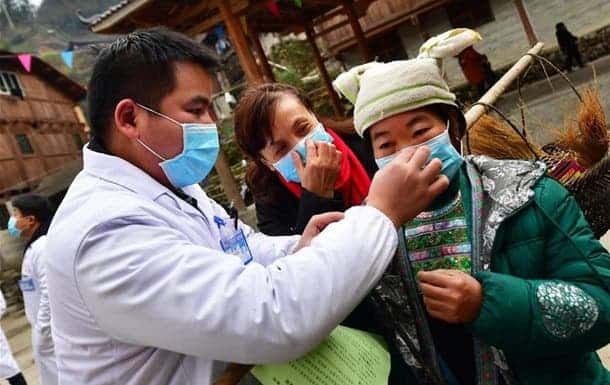
One of the things that make COVID-19 so frightening is its unpredictability. The severity of COVID-19 symptoms is on a spectrum that ranges from severe respiratory distress syndrome and death to mild, cold-like symptoms. In fact, some patients have no visible symptoms at all — these are the famous ‘asymptomatic’ cases that we’ve heard about in the news and on social media.
Asymptomatic cases are thought to contribute a great deal to the “silent spread” of the pandemic. Although an infected person might look and feel perfectly healthy, they can spread the virus just as easily as someone who coughs or who any of the other COVID-19 symptoms. This group of infected cases is actually very dangerous because they could unwittingly contribute to the spread by not realizing they are carriers, as opposed to people with symptoms who might immediately isolate themselves once they realize they are sick.
Just how many cases of SARS-CoV-2 infection are asymptomatic has been a matter of contention. Mass testing in Iceland suggests that 50% of the country’s cases were asymptomatic in March. Similarly, a testing survey carried on an entire Italian town of Vo (population 3,300) showed that more than 50% of all cases were asymptomatic. In June, researchers at the Department of Molecular Medicine at Scripps Research estimated that around 40–45% of people contracting the new coronavirus are likely to be asymptomatic.
But a new study published today in the journal PLOS Medicine suggests that the fraction of asymptomatic cases isn’t larger than 20%.
The researchers at the University of Bern, Switzerland analyzed 79 studies that reported empirical data on 6,616 people infected with SARS-CoV-2 between March and June, 1,287 of whom were deemed asymptomatic.
“About 20% of COVID-19 infections remain asymptomatic, however, there is much uncertainty around this estimate. It can range between 17% and 25%, with a prediction interval of 3%-67%, meaning that if a new study is conducted, 95% of the times, the proportion asymptomatic is between 3 and 67%. We embarked on the study to determine the true proportion of people with SARS-CoV-2 infection that would remain asymptomatic throughout the course of their infection. When the pandemic started, we simply did not know enough about the existence of, or transmissibility of, asymptomatic SARS-CoV-2 infection,” Michel J Counotte, post-doctoral epidemiologist, Diana Buitrago-Garcia, PhD student, and Nicola Low, Professor of Epidemiology and Public Health, Institute of Social and Preventive Medicine, University of Bern, Switzerland, told ZME Science.
All people infected with SARS-CoV-2 are initially asymptomatic. However, between 2-14 days after the initial infection, many may go on to develop symptoms. Perhaps a better phrasing is that all infected cases are initially presymptomatic, and many such presymptomatic cases have been classed as asymptomatic by previous studies.
“It has become clear that many people report sensationally high proportions of ‘asymptomatic infection’ because they pick up on studies that have tested for SARS-CoV-2 at a single time point. These studies, without follow up, cannot distinguish between being truly asymptomatic (a person who never developed symptoms) and pre-symptomatic (a positive individual who started without symptoms and later on developed them),” the authors told me in an email.
For their study, the researchers compiled all studies on SARS-CoV-2 and COVID-19 starting from December 2019 to the present day in a single, searchable database. Of course, this also posed some challenges due to the sheer volume of scientific studies.
After they carefully combed through thousands of COVID studies, the researchers settled on 79 studies that reported asymptomatic cases in a variety of settings, including outbreaks in nursing homes, on the Diamond Princess cruise ship, in small family clusters, and in hospitals.
Although most studies at the beginning of the pandemic suggested that a high proportion of infected cases were asymptomatic, this systematic review shows that the true number of asymptomatic cases is much lower. In reality, about 80% of infected people with the novel coronavirus end up exhibiting some symptoms.
The earlier confusion is owed to “sample size and how the population was selected, additionally the definition of an asymptomatic individual needed to take into account the course of the disease, follow-up of participants, and the definition of a truly asymptomatic or presymptomatic as mentioned before,” the researchers said.
That being said, when you combine presymptomatic and asymptomatic infections in a community, the numbers add up considerably, contributing to the silent spread of the pandemic.
“People should be aware that a minority of SARS-CoV-2 infections is truly asymptomatic. Most people who do not have any of the symptoms associated with COVID-19 when they are tested (usually because they are a contact of a confirmed case) are presymptomatic. This means that they are likely to develop symptoms in the coming days,” the authors told ZME Science.
“Keep in mind that a person with either asymptomatic or presymptomatic SARS-CoV-2 infection can still transmit the virus. In our study, we found that people with true asymptomatic infection are probably less able to transmit SARS-CoV-2 than those who go on to develop symptoms.”
“At a practical level, if you do not currently have any symptoms, but have suspicions about having COVID-19 or have been in contact with someone who tested positive, get tested. Treat yourself as though you were infected, and isolate yourself from others while you wait for the results. Follow the recommendations of your health authorities.”






